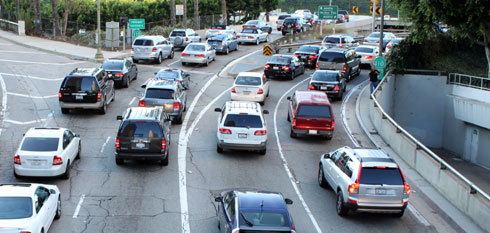
09 Jan Decline in Traffic Fatalities Shows Long-Term Trend
Car accidents may be one of the most common causes of deaths, but this trend appears to be on a downward spiral.
While a reduction in highway deaths is great news, there are still many thousands of people losing their lives on the nation’s highways every year according to the National Highway Traffic Safety Administration.
Statistical Overview
Between 2004 and 2013 the percentage of fatal traffic accidents in the US declined by nearly 25 percent! Still though, we need to understand that the numbers are still extremely high. The NHTSA reported that there were 32,719 people killed on the nation’s highways in 2013 alone.
The agency also reported that from 2012 to 2013 car accident fatalities went down by 3.1 percent, which takes us to a historic low of 1.1 deaths for every 100 million vehicle miles traveled. Some of the other key statistical factors include the following:
- The number of fatalities among occupants of passenger vehicles declined by three percent to 21,132, the lowest number since 1975. This figure includes passenger cars, minivans, pick-up trucks, and SUVs.
- Fatalities involving occupants in large trucks declined by 0.9 percent.
- Fatalities involving motorcyclists fell by by 6.4 percent (the first decline since 2009).
- The number of fatalities involving pedestrians declined 1.7 percent for a total of 4,735, but it is still higher than the 2009 total of 4,109 pedestrians.
- The number of fatalities involving cyclists increased by 1.2 percent in 2013, the highest figure since 2006.
- The number of people injured in all crashed decreased in 2013 compared to 2012 as follows: occupants in passenger vehicles (2.2 percent); occupants in large trucks (4 percent); motorcyclists (5.4 percent); pedestrians (13 percent); and pedalcyclists (2 percent).
- The number of people who were killed in crashes caused by distraction declined to 3,154 compared to 3,380 in 2012 (6.7 percent). Unfortunately, the number of people who were injured in these types of crashes increased by one percent (424,000) compared to 2012.
The declines in traffic deaths were rather substantial in several states. Thirty-four states showed reductions in the overall number of traffic fatalities with Ohio showing 132 fewer; Kentucky 108 fewer; Pennsylvania 102 fewer; South Carolina 96 fewer; and Arkansas 77 fewer.
The NHTSA also reported that in a couple of areas, the figures rose rather sharply – at least when defined on a percentage basis. In New Hampshire the increase was 25 percent for a total of 135 fatalities, and in Washington, D.C. the increase was 33 percent for a total of 20. The states with the highest number of fatalities in 2013 were Texas (3,382), California (3,000), and Florida (2,407).
Analytical Data
The Wall Street Journal released an analysis report that showed a significant drop in highway fatalities (25 percent over the past decade). According to researchers, this improvement is the result of better safety equipment such as electronic stability systems in newer car models. While the skill and behavior of the driver certainly has an effect on the fatality rate, car experts have stated that the inclusion of advanced safety gear is essential. Electronic stability control, a requirement on new models, saved more than 1,100 lives in 2012 alone. Manufacturers have also included additional airbags to cover drivers and passengers.
The information researchers obtained was derived from NHTSA. The information showed a decline of 3.1 percent in 2012 and 2.1 percent in 2013. According to the Deputy Administrator, the decline in fatal car accidents is not only due to safety advances, but also because there is stronger enforcement of the laws and an increase in consumer awareness.









Sorry, the comment form is closed at this time.